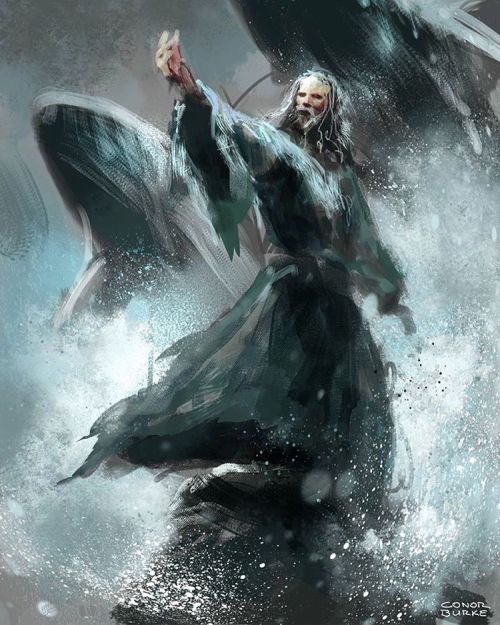 |
| An apprentice Lipimancer learning the pleasure of their craft |
Lard Lords
You can smell them before you see them, the sweet stench of gently rotting meat clings to them. As they waddle into view you can see their cheeks flushed too rosy, their eyes gleam with a little too much vigor, and of course their prodigious bulk is the surest sign you are dealing with the foulest and most potent of necromancers, the Lipimancer.Some say they are simply blessed with corpulence at birth. Others claim that they earn their weight like the rest of us but they weave into their food spells of life and growth and power. Still others claim that these abominations at one point consumed the flesh of man and learned to crave it. But who knows? Ask them yourself, perhaps they will induct you into their ranks and teach you their secrets. Or, more likely, they will laugh a great body quivering laugh and consume you.
They wear their nobility and their power in their rolls. These are spell casters that consume calories instead of mana. The very first Lard Lord took note when their mentor and professors told them about blood magic, how you could trade blood for more powerful and fell magic. They dared to ask the dark question, what else would be suitable for trade?
Blood may be the vehicle for the bodies nutrients but fat is the good stuff, why do you think we love bacon so much? They tried it first on rendered animal fat and found that relative to blood it was like going from coal to jet fuel. The magic of Lipimancy was born, and thus true Necromancy was perfected. For the goal of Necromancy is to master death, and therefore cling to life, and consuming prodigious amounts of magic food will certainly help you cling to life.
You can play a Lipimancer if you want. They are kind of like sorcerers, but instead of spells per day they track the fat stored in their bodies and they can draw more and more fat to overcharge their spells. An over drawn Lipimancer is a withered skeleton, emaciated and horribly gaunt. But they have mastered eating, and given a few days and enough flesh they will be back to their rotund self's.
Lipimancer Spells:
Cantrips:
Consume: The Lipimancer has learned to magically eat food very effeciently. With this spell they can eat and digest food much faster than a normal person, instead of taking an hour to eat and gain the benifits (an calories) from a meal they only require one minuite.
1t level:
Emisis: A Lipimancer can choose to turn their stored energy into horribly acidic magical excrete that they can spew from their mouths. This is a 20ft cone, with a Dex save for half damage, dealing 2d6 acid damage. Those hit by the blast must also make a Constitution save or be poisoned until the next round.
At higher levels: The damage done by the cone increases by 1d6 when cast with each spell slot above 1st.
2nd Level:
Swallow Whole: The Lipimancer has learned to weaponize their eating, they are now able to swallow whole Tiny and smaller creatures. The creature must make a Dexterity save of disappear into the Lipimancer's maw. Once in the stomach, the creature takes 2d8 acid damage each round until dead, or a minute later, whichever happens first. The Lipimancer gains the benefit of having eaten 1000 calories*the HD of the consumed creature after a minute.
At higher levels: Using spell slots above 2nd allows them to swallow larger foes. Each spell slot allows them to swallow one size category larger.
3rd Level:
Vortex of Excess: The Lipimancer can project their gluttony out into a whirling vortex, causing those caught in its current to gain massive amounts of weight. For every round they end in the 40 ft diameter vortex centered on the Lipimancer they must make a Constitution save. On a failed save they balloon in weight. This first failed save causes them to loose all Dexterity bonuses. The second failed save acts as the effect of the Slow spell. And the third and final failed save means they they pop, dying instantly.
4th Level:
Dimension of Flesh: Carrying all of that weight around gets hard, so Lipimancers developed this spell. They send part of their prodigious bulk to a pocket dimension for safe keeping, this has the interesting effect that Lipimancers can partition portions of their HP into these pocket dimensions. When cast at the beginning of the day the Lipimancer determines how much of their weight (and therefore their HP) they want hiding away. They can call this stored fat back to their body as a full round action, though they must make a Constitution saving throw to avoid being sickened from the heady experience.


















.jpg)



















